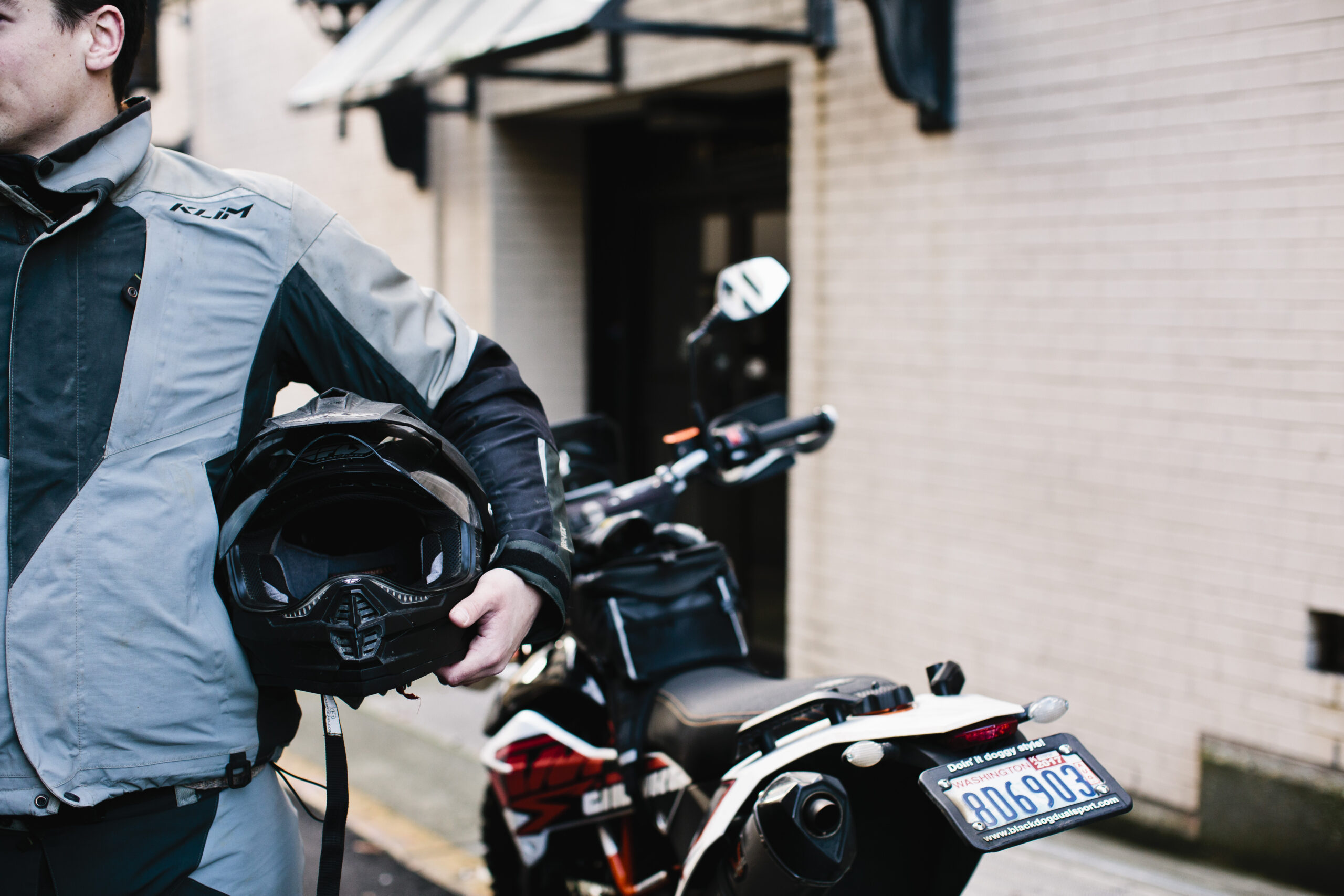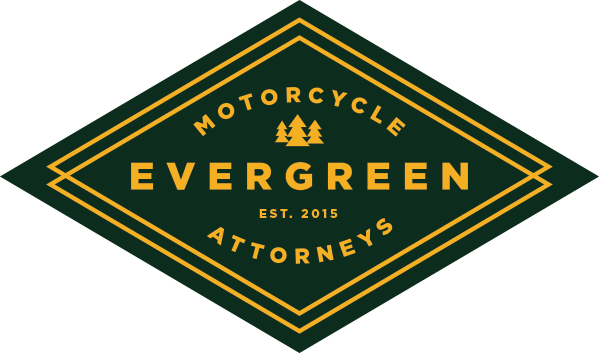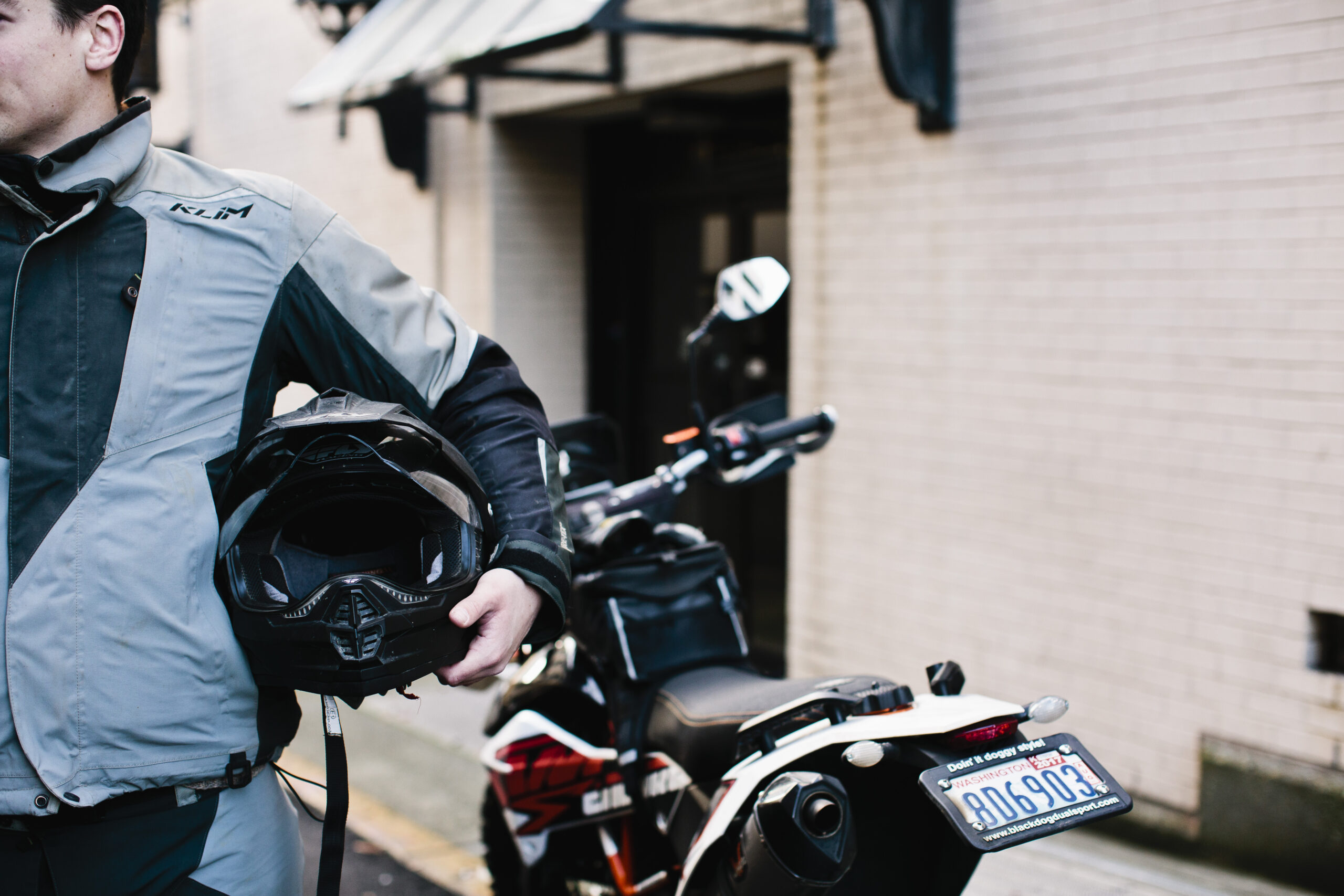
The feel of the cool air and the freedom of the open road … there’s nothing quite like riding a motorcycle. Choosing the right motorcycle safety gear is what stands between you and the elements, the asphalt, and impact. Yes, some people may resent the barrier that gear imposes. However, motorcycle safety gear also demonstrates profound respect the rider has for the larger riding experience. At Evergreen Motorcycle Attorneys, we highly recommend always wearing high-quality motorcycle gear no matter how long or far you plan to travel.
When choosing the right motorcycle safety gear, we recommend looking for three components: safety, performance, and comfort. First, determine how you need your gear to perform. What are the conditions in which you are riding? Are you taking your bike over the mountain pass to Eastern Washington, through the rain on the Olympic Peninsula, or exploring off-road in your ATV or dirt bike? Make a list of the features you need to handle the elements you face.
Fit for Safety and Comfort
Safety and comfort translate to superior fit. Because you’re controlling your bike with your body, you need your gear to be comfortable and not impede performance. Your gear should not be a distraction. Give it the seat test before you buy. Gear should be designed to fit on your body as you sit on the bike. For example, the jacket should not ride up in the back as you lean over your bike. Legs should be longer than your pants since your legs stretch out to the pegs. Good fit means that your skin is covered—no gaps! Even a mild impact with the pavement can take significant amounts of skin off of your body. Your gear should fit snugly and allow you the movement you need to operate your vehicle.
Department of Transportation-Approved Helmets
Minimally, a DOT-approved helmet is required by law to protect your head and face from oncoming objects. According to the CDC, helmets reduce your risk of head injury by 69 percent and death by 37 percent. Since 45 percent of head impact injuries happen in the face, those little half-helmets put the odds in the pavement’s favor. We recommend purchasing a full-face helmet and have it professionally fitted. It should hold your head comfortably—no pinching or pressure points—and not rotate around on your head.
Motorcycle Jackets & Pants, Boots & Gloves
There are many types of construction methods and materials used. Material thickness, single-, double, or triple-stitched seams, impact-absorbing material, for example. Take a look at the innovations in body armor. Bottom line, you need the article of clothing to offer you protection and not fall apart when you need it most.
Head-to-toe suits offer more protection, but separate pieces may be more versatile. Once you’ve determined what features you need, like venting, warmth, rain protection, etc., look at the quality. Pull at the seams to see if the stitching pulls apart. Research the material and learn how it performs under stress. Be willing to pay for value.
Your arms, legs, hands and feet do most of the work in controlling your bike and also take a lot of shock on impact. Choose strong materials like Kevlar and pay attention to how they are constructed. Make sure that the you have no gaps between jacket and pant, boot and pant, or wrist and gloves—skin should not be exposed. Non-slip boots are a must to provide traction and grip.
Biking Style
You can’t dismiss personal style as an important part of why people choose motorcycle gear. Motorcycling makes a statement, and many riders take pride in how they look. We can all agree that everyone looks best with their skin on and head in place. Today’s motorcycle gears and accessories offers a variety of styles to please any type of rider. You can even add functional options, such as reflective lights and Bluetooth connectivity. In the end, choose gear that really works, and wear it with the confidence to rock the look.

